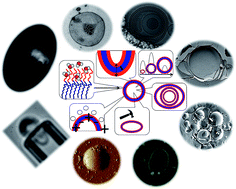Selecting the appropriate analytical methods for characterizing the assembly and morphology of polymer-based vesicles, or polymersomes are required to reach their full potential in biotechnology. This work presents and compares 17 different techniques for their ability to adequately report size, lamellarity, elastic properties, bilayer surface charge, thickness and polarity of polybutadiene–polyethylene oxide (PB–PEO) based polymersomes. The techniques used in this study are broadly divided into scattering techniques, visualization methods, physical and electromagnetical manipulation and sorting/purification. Of the analytical methods tested, Cryo-transmission electron microscopy and atomic force microscopy (AFM) turned out to be advantageous for polymersomes with smaller diameter than 200 nm, whereas confocal microscopy is ideal for diameters >400 nm. Polymersomes in the intermediate diameter range can be characterized using freeze fracture Cryo-scanning electron microscopy (FF-Cryo-SEM) and nanoparticle tracking analysis (NTA). Small angle X-ray scattering (SAXS) provides reliable data on bilayer thickness and internal structure, Cryo-TEM on multilamellarity. Taken together, these tools are valuable for characterizing polymersomes per se but the comparative overview is also intended to serve as a starting point for selecting methods for characterizing polymersomes with encapsulated compounds or polymersomes with incorporated biomolecules (e.g. membrane proteins).

